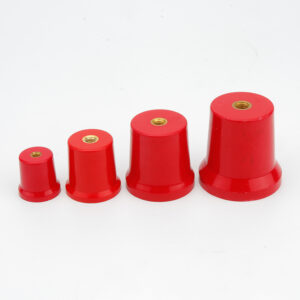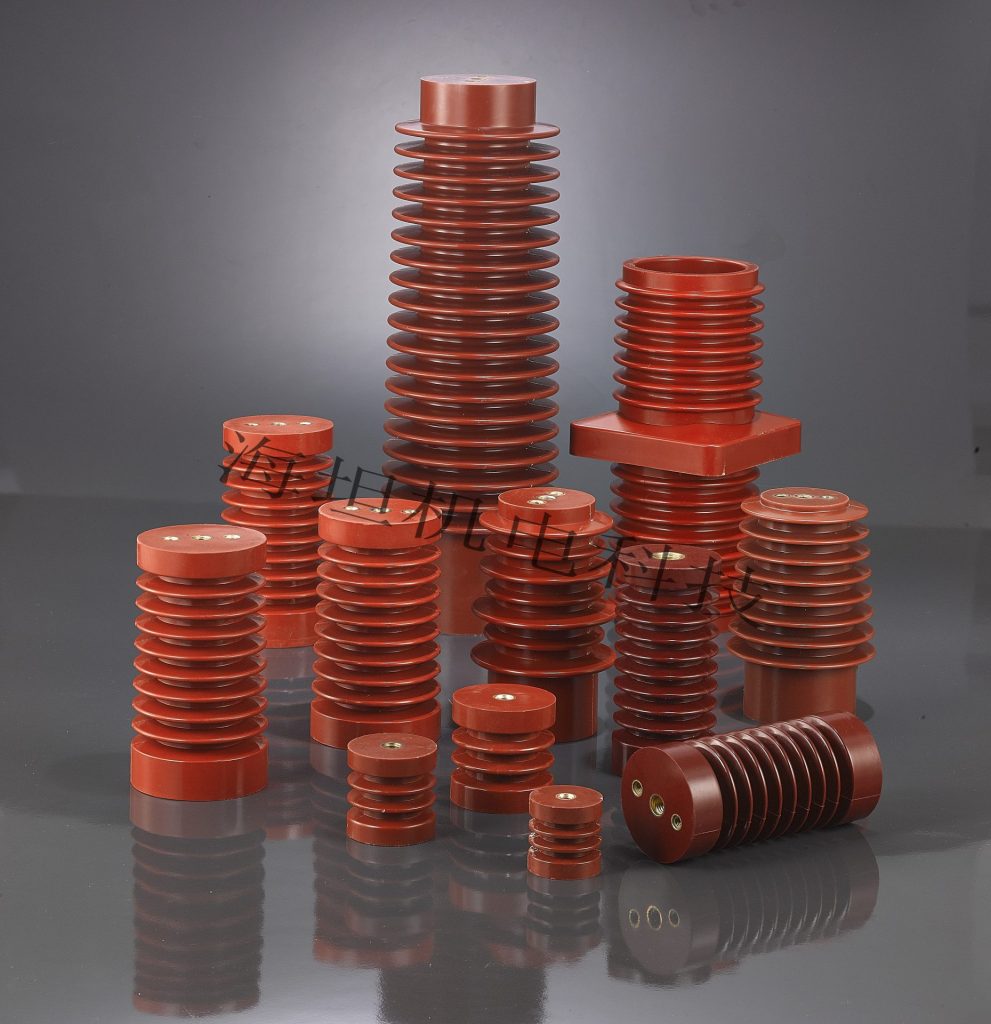CY insulators: Guardians in electrical applications
CY insulators have a history spanning hundreds of years. With their distinctive conical or cylindrical design and efficient insulation properties, they have played a crucial role in power systems, providing essential support and insulation to ensure system stability. This article will delve into the specific applications and advantages of CY insulators in electrical fields such as distribution boxes, switchgear, inverters, and green power solutions, along with relevant data to support their market position.
What are CY insulators
An insulator is a material commonly used in power systems and transmission systems, serving the dual function of support and insulation. CY insulator is a specific type of insulator, generally featuring a simple, conical design. It is typically made from BMC (Bulk Molding Compound) or SMC (Sheet Molding Compound) materials, which offer durability and reliability. These materials are chosen for their high mechanical strength and excellent insulating properties, making CY insulators a reliable choice for various electrical applications.Therefore, they are widely used in low-voltage distribution lines, switchgear, inverters and other related electrical products.

Application of CY insulators in distribution boxes
Distribution boxes are core equipment for distributing electricity in power systems. According to market data, the use of CY insulators in distribution boxes can reduce the equipment failure rate by 15% and extend the overall life of distribution boxes by about 20%. Therefore, the role of CY insulators in distribution boxes is very important. It ensures electrical insulation between various circuits and prevents current leakage, thereby protecting users and equipment safety. Additionally, due to the high mechanical strength and chemical resistance of CY insulators, they can stay stable for a long time under different industrial environments such as high-humidity and high-pollution thus save the maintenance costs.
Application of CY insulators in switch cabinets
The application of CY insulators in switch cabinets is mainly reflected in their high voltage resistance and long life characteristics. Because switch cabinets are important equipment for controlling and protecting circuits, CY insulators are used here to support and fix conductive parts while providing necessary insulation protection. And due to their material characteristics, they are light overall, which also helps to reduce the overall weight of the switch cabinet, making installation and maintenance more convenient.
Application of CY insulators in inverters
Inverters are important components for converting DC power into AC power. Especially in green power systems such as photovoltaic and wind power, CY insulators are widely used in inverters to isolate DC and AC circuits and protect sensitive electronic components from voltage shocks. Their high temperature resistance and electrical corrosion resistance also ensure the reliability of the inverter.
Application of CY insulators in green power
With the rise of new energy sources and growing environmental awareness, the demand for renewable energy is increasing. Green power equipment, like solar panels and wind turbines, is becoming more popular. This has led to a growing need for high-performance insulation materials. CY insulators are especially important in these applications because they are lightweight, corrosion-resistant, weatherproof, and have a conical design that provides high mechanical strength. According to relevant data, using CY insulators in green energy systems can reduce power transmission losses and improve overall system efficiency by about 5%, extending the lifespan of equipment and promoting wider use in this field.
FAQ
Q1: What are the advantages of CY insulators compared with traditional glass insulators?
A1: The cone design of CY insulators has higher mechanical strength, lighter weight and better corrosion resistance than glass insulators. In addition, due to its light weight, CY insulators are easier to install and maintain and are suitable for various complex environments.
Q2: How long is the service life of CY insulators?
A2: Under standard environmental conditions, the service life of CY insulators can usually reach more than 30 years, which is much higher than some traditional insulators, reducing the frequency and cost of replacement and maintenance.
Q3: How do CY insulators cope with high temperature and high humidity environments?
A3: CY insulators are made of BMC and SMC materials and can maintain stable performance in high temperature environments. At the same time, their excellent moisture and corrosion resistance ensures that they still have good insulation performance in various harsh environments.
Q4: What types of electrical equipment are CY insulators suitable for?
A4: CY insulators are widely used in low-voltage distribution and communication lines such as distribution boxes, switch cabinets, inverters, green power systems, etc., and are suitable for the insulation and support needs of various electrical equipment.
Conclusion
Over the years, CY insulators have evolved from being made of traditional ceramic or glass to modern BMC and SMC composite materials, significantly enhancing their performance. However, their primary function has remained unchanged. Looking ahead, as technology advances, the development of CY insulators will focus more on material selection, aiming to reduce weight while improving insulation capabilities. For more information or to explore CY insulators further, please contact our experts for a detailed discussion.
--- END ---
© Copyright 2024 China Haitan Electromechanical Technology Co., Ltd. All rights reserved.SUPPORT BY:JUNJ Privacy Policy

 E-mail: shay@cnhaitan.net
E-mail: shay@cnhaitan.net No. 20 Lingyun Road, Dongfeng
No. 20 Lingyun Road, Dongfeng 
